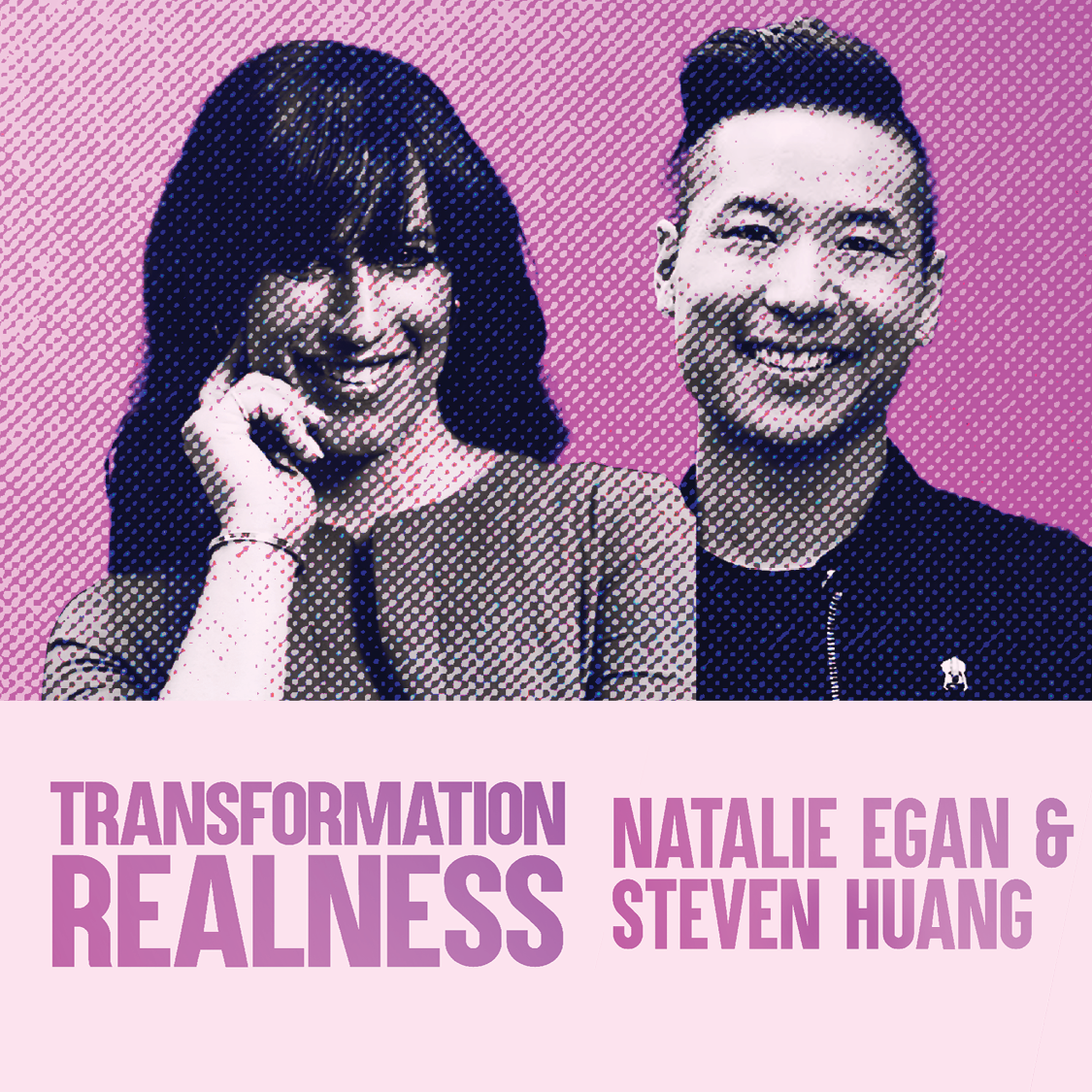On this episode of Transformation Realness, I’m talking with Natalie Egan, CEO and founder of Translator, Inc., and Steven Huang, director of social justice at the Multidisciplinary Association for Psychedelic Studies (MAPS). Our conversation today is raw and heartfelt. I try to give every conversation the realness treatment on my little show, but this is one for the books.
Today we talk about how much of ourselves we can and should bring to work — and how there may be a double standard for leaders and HR when it comes to how much of ourselves we bring. We also talk about trauma, therapy and supporting employees when they go through challenging life experiences. Finally, we get real about self love, and we shed some serious tears.
So grab a tissue, grab a notebook and be ready for some serious soul food.
Find the Right Realness Balance
Learning to bring our authentic selves to work while upholding professional responsibilities is a nuanced challenge for HR leaders. On one hand, fostering vulnerability and emotional expression allows employees to feel truly understood and supported. However, HR professionals must also make difficult yet necessary decisions aligned with legal and business needs.
“If it’s all emotion and all vulnerability, we probably don’t go very far,” Natalie says. “You have to counterbalance that with — at least in my case — other personalities, other people that you know, for their own reasons, may not bring everything to work, or maybe just are not as emotional as I am.”
Finding equilibrium requires intentionality. HR leaders can promote authenticity by modeling openness about personal dimensions, while also communicating to employees and other leaders that they should bring as much or as little of themselves to work as they feel comfortable with.
“We’re all human. I don’t think human leaders should be pressured to bring more of themselves at work,” Steven says. “I do think leaders need to recognize that they are a leader, and they should model for others that it’s okay to bring some parts of yourself and not others by being explicit about that. Even if I show up as my whole 100% self most of the time, I should make it clear that I don’t expect you to as well.”
Experimenting respectfully with new approaches can provide valuable support. As Steven shares, one organization “had a licensed therapist come and hold space for whatever people were going through in their life that month. And part of this was a response to the CEO saying, “I can’t respond to every issue that impacts everyone.’” Prioritizing well-being demonstrates care for employees’ whole selves within professional boundaries. With openness and care, HR leaders can navigate this complex role in a way that enables both organizational success and individual growth.
Remember Employees Are People, Too
Creating spaces for meaningful connection is vital for supporting employee well-being. But in today’s mixture of in-person, hybrid and remote working environments, you need a deliberate plan for fostering connection at work. “We don’t interact with each other outside. We’re not bumping into each other at the water cooler. We don’t live near each other,” Natalie says. “We have to be very intentional about that. And I think creating intentional spaces for people to connect is really easy to say — [but] it’s hard to do.”
At Translator, Inc., Natalie gives her team members space during their Monday morning check-in to reflect on the weekend and build rapport in low-stakes discussions. This small investment nurtures the relationships that sustain engagement and performance. Aim to craft a culture where people feel seen, supported and able to bring their best work — however much authentic self they choose to share — to their duties each day.
Test New Ways to Support Well-Being
Creatively explore new approaches for bolstering employee support — and don’t forget to ask them how you can help them feel more comfortable being themselves at work. Periodic pulse surveys or anonymous feedback, for example, allow you to collect employee input without too much pressure on them.
Steven’s CEO took a straightforward approach to handling frequent stressors or triggers employees were experiencing. “Every three or four weeks we had a licensed therapist come and hold space for whatever people were going through in their life that month,” he says. “And part of this was a response to the CEO saying, ‘I can’t respond to every issue that impacts everyone. So what if we just have a space where people can bring what’s impacting them and all support each other?’”
With open communication and frequent evaluation of evolving needs, a variety of support structures may unfold to complement existing benefits and resources.
People in This Episode
Author
-

Kyle Lagunas is the Head of Strategy & Principal Analyst at Aptitude Research. He’s spent over a decade studying innovation cycles in HR and talent technology—with leadership roles in both the solution provider and practitioner space—and brings that breadth of experience and insight to his work advising vendors and practitioners on the ever-evolving world of talent. He’s a transformational talent leader, top industry analyst, and non-nonsense strategist with a reputation for bringing a fresh perspective to the table. Before joining Aptitude, he served as the Head of Talent Attraction, Sourcing & Insight at General Motors where he led the go-to-market functions of the company’s global talent acquisition and played a pivotal role in transforming their recruiting strategies and processes. At Beamery, his role as Director of Strategy put him at the intersection of customer experience, sales and marketing, and product. At Aptitude, Kyle brings together all aspects of his career to bridge the ever-growing gap between talent leaders, their stakeholders, and their solution providers to power more meaningful outcomes.
Recent Posts
